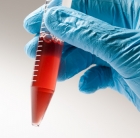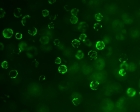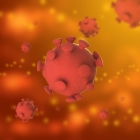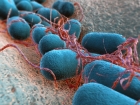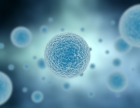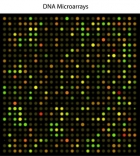Press monitoring
Like submicroscopic spacecrafts: Graphene flakes to control neuron aktivity
27.5.2019 | Press monitoring
Like in a science fiction novel, miniscule spacecrafts able to reach a specific site of the brain and influence the operation of specific types of neurons or drug delivery: Graphene flakes, the subject matter of the new study of the group of SISSA professor Laura Ballerini, open up truly futuristic horizons. Measuring just one millionth of a...
Snakebite crisis gets US$100-million boost for better antivenoms
24.5.2019 | Press monitoring
Biomedical-research funder the Wellcome Trust has announced an ambitious initiative to improve the treatment of snakebites in poor countries. Snakebites kill tens of thousands of people a year, partly because they are treated with archaic antivenoms that often work only for one species. Wellcome’s ?80-million (US$103-million) programme, announced...
Placental stem cells found to regenerate heart cells after heart attack
22.5.2019 | Press monitoring
According to the World Health Organization, cardiovascular diseases are the biggest killers of people in modern times, and it's largely due to the heart's inability to repair itself properly. Even if a person survives the initial cardiac arrest event, scar tissue renders the heart less effective at pumping blood and more likely to suffer future...
How plant viruses can be used to ward off pests and keep plants healthy
20.5.2019 | Press monitoring
Imagine a technology that could target pesticides to treat specific spots deep within the soil, making them more effective at controlling infestations while limiting their toxicity to the environment. Researchers at the University of California San Diego and Case Western Reserve University have taken a step toward that goal. They discovered that...
Lamprey molecules squirm into the brain to deliver cancer drugs
17.5.2019 | Press monitoring
With a mouth like a whirlpool full of teeth, the lamprey is not something you'd normally want anywhere near your brain. But now, researchers from the Universities of Texas and Wisconsin-Madison have used molecules taken from the freaky fish's immune system to deliver drugs inside the body – and even managed to sneak them into the brain. The...
Researchers replace the genes of E. coli bacteria with synthesized genome
15.5.2019 | Press monitoring
A team of researchers at Cambridge University has replaced the genes of E. coli bacteria with genomes they synthesized in the lab. In their paper published in the journal Nature, the group describes replacing the genome and removing redundant genetic codes. The genome of any given organism is quite complex, yet it is based on just three sets of...
How scorpion venom is helping surgeons detect brain cancer
13.5.2019 | Press monitoring
A new imaging technique designed to help surgeons identify the location of malignant brain tumors during surgery is showing promising early clinical trial results. The technique combines a new high-sensitivity near-infrared camera with a special imaging agent synthesized from an amino acid found in scorpion venom. Treating gliomas, a lethal kind...
Researchers quicken drug discovery method via zombie-like cells
10.5.2019 | Press monitoring
Researchers are using zombie-like cells that behave normally on the outside, but are filled with magnetic particles inside, to screen potential drugs from natural products. Discovered at The University of Alabama, the method could quicken a laborious task that slows drug discovery, according to findings in a paper published in the journal...
Machine learning reveals metabolic pathways disrupted by the drugs, offering new targets to combat resistence
8.5.2019 | Press monitoring
Most antibiotics work by interfering with critical functions such as DNA replication or construction of the bacterial cell wall. However, these mechanisms represent only part of the full picture of how antibiotics act. In a new study of antibiotic action, MIT researchers developed a new machine-learning approach to discover an additional...
Peanut genome sequenced with unprecedented accuracy
6.5.2019 | Press monitoring
Improved pest resistance and drought tolerance are among potential benefits of an international effort in which Agricultural Research Service (ARS) scientists and their collaborators have produced the clearest picture yet of the complex genomic history of the cultivated peanut. Scientists undertook this large project to better understand the...

